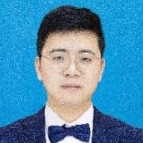Wireless Power Transfer and Wireless Energy Harvest
A special issue of Electronics (ISSN 2079-9292). This special issue belongs to the section "Power Electronics".
Deadline for manuscript submissions: closed (15 April 2023) | Viewed by 10321
Special Issue Editors
Interests: power electronics; wireless power transfer; energy harvest; urban rail transit power supply
Interests: power electronics; electric vehicle technologies; machines and drives; wireless power transfer
Special Issues, Collections and Topics in MDPI journals
Interests: wireless power transfer; power electronics; transportation electrification
Special Issues, Collections and Topics in MDPI journals
Special Issue Information
Dear Colleagues,
In the intelligence era, a large amount of power electronic and sensor equipment is used widely. Stable power supply has been a big problem for a long time, especially considering large-scale equipment power supply. Wireless power transfer (WPT) and wireless energy harvesting (WEH) are effective methods to solve the above problems. As a non-contact power supply method, WPT can realize safe and reliable access to mobile devices and multiple loads. WEH can convert unused or wasted energy in the surrounding environment into valuable electric energy for the power supply. WPT and WEH technology have been extensively developed in recent years, paving the way for various applications. This Special Issue introduces the latest WPT and WEH systems research and presents power supply solutions for different applications. We welcome original research articles, including rigorous methodology and in-depth discussions to propose novel solutions to challenges in related fields. Commentary articles summarizing the current state of understanding are also welcome.
In this Special Issue, the topics of interest include but are not limited to:
- Topology optimization for WPT systems;
- Coupler design and analysis for WPT systems;
- System control and modeling;
- Electromagnetic compatibility;
- Foreign object detection;
- Practical design and productization of WPT systems;
- Energy-harvesting-aided Internet of Things;
- Wireless-powered communications;
- System design and optimization for WEH systems.
Dr. Bo Luo
Dr. Chaoqiang Jiang
Prof. Dr. Ruikun Mai
Guest Editors
Manuscript Submission Information
Manuscripts should be submitted online at www.mdpi.com by registering and logging in to this website. Once you are registered, click here to go to the submission form. Manuscripts can be submitted until the deadline. All submissions that pass pre-check are peer-reviewed. Accepted papers will be published continuously in the journal (as soon as accepted) and will be listed together on the special issue website. Research articles, review articles as well as short communications are invited. For planned papers, a title and short abstract (about 100 words) can be sent to the Editorial Office for announcement on this website.
Submitted manuscripts should not have been published previously, nor be under consideration for publication elsewhere (except conference proceedings papers). All manuscripts are thoroughly refereed through a single-blind peer-review process. A guide for authors and other relevant information for submission of manuscripts is available on the Instructions for Authors page. Electronics is an international peer-reviewed open access semimonthly journal published by MDPI.
Please visit the Instructions for Authors page before submitting a manuscript. The Article Processing Charge (APC) for publication in this open access journal is 2400 CHF (Swiss Francs). Submitted papers should be well formatted and use good English. Authors may use MDPI's English editing service prior to publication or during author revisions.
Keywords
- power supply
- wireless power transfer
- energy harvest
- the internet of things
- sensors







